Some of the best Bonsai trees for beginners might be growing in your very backyard. Intricate and delicate, Bonsai trees are not always made for the first-time gardener or plant caretaker. However, some Bonsai tree species are easier to care for than others, with minimal needs and forgiving growth habits.
In this article, we will go over some of the best Bonsai trees for beginners, including options that grow both indoors and outdoors. We’ll give you a brief overview of the plant as a whole, as well as where you should place it for maximum growth. Let’s get started and address some of the things you should know if you want to take care of a Bonsai tree for the first time!
The 10 Best Bonsai Trees for Beginners
Technically speaking, Bonsai trees are any type of plant, shrub, or tree, just kept at a miniature scale. That’s right: any mini, woody shrub or tree can be considered a Bonsai tree! But that doesn’t mean all options are right for beginners. Taking care of a Bonsai tree is an investment, especially when you consider the fact that most specimens aren’t likely ready to be shaped until they are at least five years old.
However, just like many other fussy houseplants, Bonsai care is easy once you know what you’re doing. Once you have an ideal container and your pruning kit, it’s time to pick a tree that works well for you. If you want to set yourself up for success for your first foray into Bonsai care, here are some options that are more forgiving and easier to care for than others!
Ficus Bonsai

©iStock.com/RenataKa
Arguably the easiest and most popular Bonsai tree to care for, Ficus Bonsai trees are best kept indoors. There are hundreds of potential Ficus Bonsai trees to craft, based on species alone. However, the most popular indoor Ficus Bonsai trees are the Ficus retusa and the Ficus ginseng. Under the right circumstances, Ficus Bonsai trees may produce aerial roots and form unique structures, but only with high humidity and bright indoor sunlight (as well as your help, of course!).
Juniper Bonsai
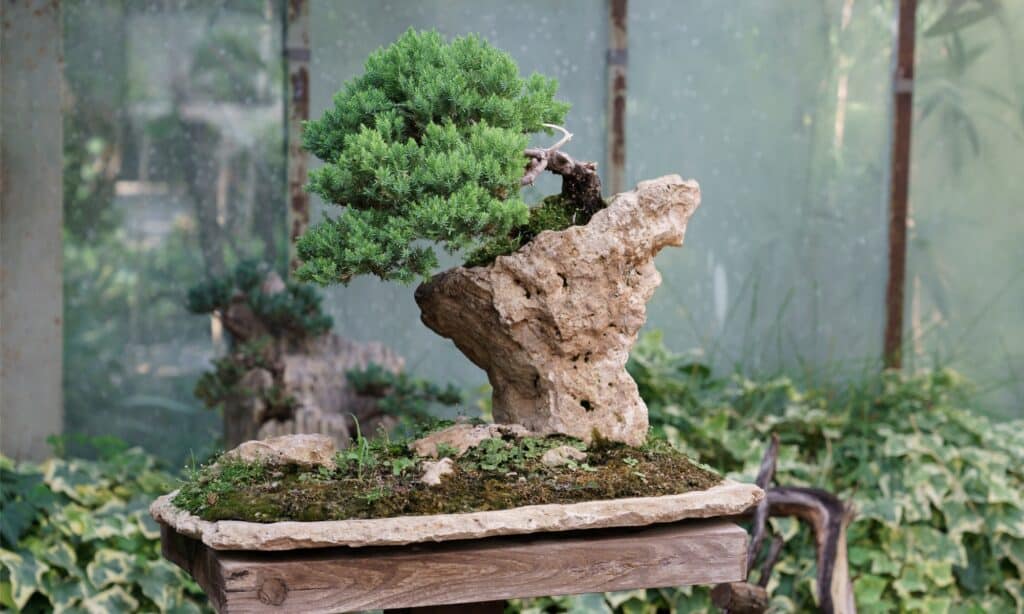
©iStock.com/Dima Berlin
Evergreen and attractive, Juniper Bonsai trees are frequently sold in hardware stores and nurseries around the world. This is one of the easiest Bonsai trees to care for. Just keep in mind that it will only survive outdoors. Juniper Bonsai trees also produce two different types of needles, depending on the species. Proper identification is key to taking care of your tree, though all Juniper Bonsai species will produce beautiful and intricate deadwood.
Chinese Elm Bonsai
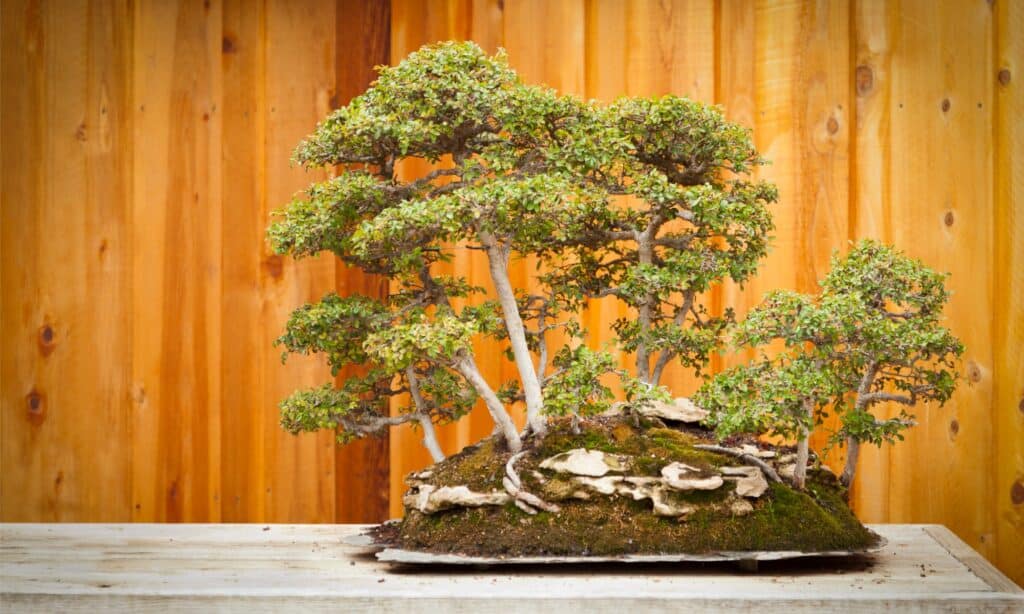
©iStock.com/Feverpitched
With small leaves and beautifully detailed bark, Chinese Elm Bonsai trees are perfect for beginners given their flexibility. You can keep this tree either indoors or outdoors, depending on the season and your local climate. Plus, Chinese Elm Bonsai trees react well to pruning and overall shaping, making this a very forgiving Bonsai specimen. Enjoy experimenting with the branches on this one! You can also try to cultivate a grove of Elm Bonsai trees, but only if you’re feeling ambitious.
Japanese Maple Bonsai
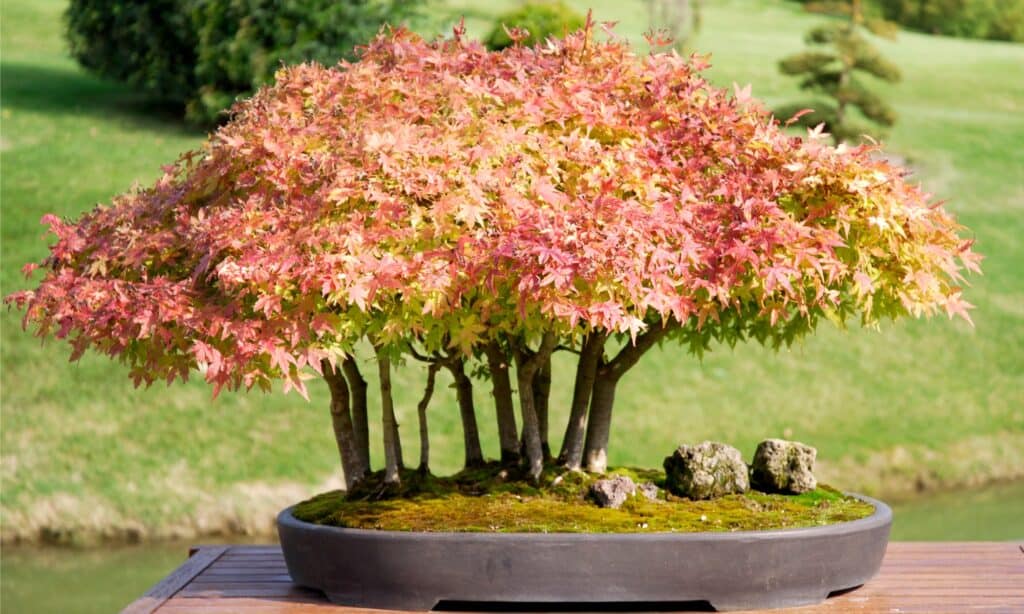
©iStock.com/Musat
Iconic and beloved for their beautiful fall foliage and distinctly shaped leaves, Japanese Maple Bonsai trees bring beauty and grace to any home. However, keep in mind that Japanese Maple Bonsai trees need to be kept outdoors. They prefer to be out of harsh summer sunlight as well as temperatures below 20 degrees Fahrenheit. There are roughly 500 different Japanese maple tree species, with varying foliage colors and leaf shapes. Have fun choosing a cultivar that speaks to you. This Bonsai tree is fairly forgiving when it comes to its care. Plus, it will always produce beautiful deciduous foliage for you to enjoy!
Want to try growing your own Japanese Maple Bonsai tree from seed? Learn how to best cultivate Japanese maple seeds by clicking here!
Dwarf Jade Bonsai
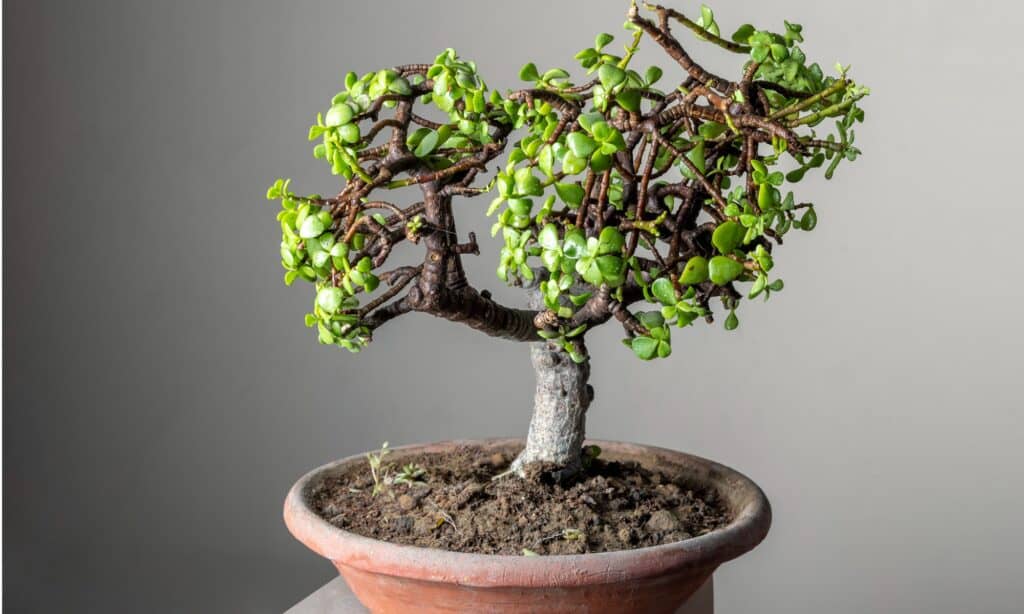
©iStock.com/prabhjits
Quick to grow and easy to shape, Dwarf Jade Bonsai trees are unique given their foliage and trunks. With succulent leaves and a forgiving growth habit, Dwarf Jade Bonsai trees are fantastic for beginners and are ideally grown indoors. However, if you live in a climate that doesn’t often experience temperatures below 40 degrees Fahrenheit, your Dwarf Jade will enjoy being outside in full sunshine. Its leaves will gain a reddish tinge if enough sunlight is provided!
Money Tree Bonsai

©Mid Tran Designer/Shutterstock.com
Also known as Pachira, money tree houseplants can be made into Bonsai trees. While they don’t grow as intricately as other Bonsai tree species, money trees are very easy to care for. They can be crafted into their own unique type of Bonsai, in a way. If you are able, find a money tree that isn’t braided. The trunks of this particular tree can swell and destroy each other if they are too close together. This is also a great specimen to grow indoors, thriving in bright, indirect light.
Japanese Black Pine Bonsai
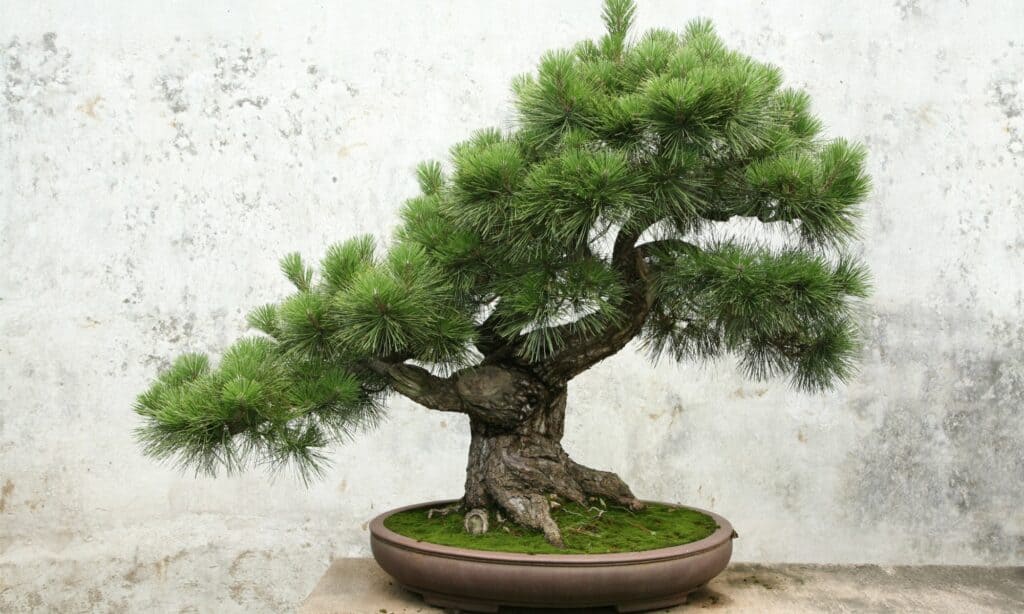
©iStock.com/Banannaanna
As Pine Bonsai trees age, their bark becomes scaled and silvery. The Japanese black Pine Bonsai is no exception, and this tree is great for beginners. It has a very traditional Bonsai look and produces deep green needles that stick up. This gives you plenty of artistic freedom to prune and shape. The wood of this particular Bonsai is extremely strong. You can grow it outdoors with minimal protection during the wintertime, depending on your region.
Rosemary Bonsai
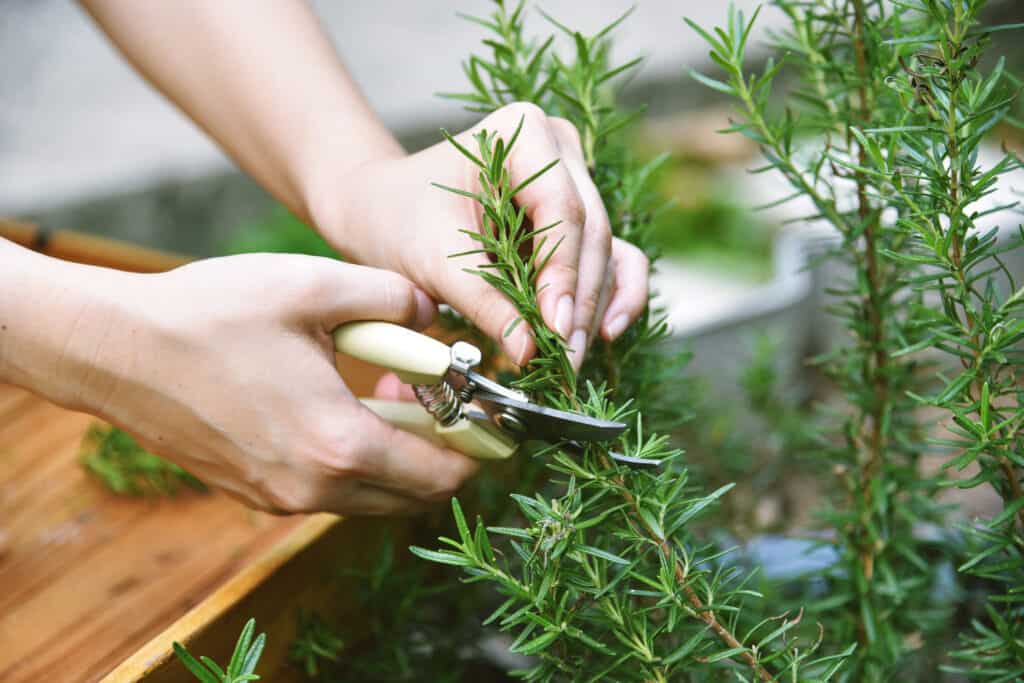
©iStock.com/Artfully79
Did you know that herbs can also be crafted as Bonsai trees? You can shape a traditional rosemary plant into a unique Bonsai that can be kept both indoors or outdoors. Keep in mind that herbs typically have different soil requirements compared to the average Bonsai tree. However, most are hearty enough and easy enough to work with that you may not run into any problems whatsoever! This is also a great plant to consider if you are worried about Bonsai startup costs, as rosemary plants are very easy to procure for a fair price.
Azalea Bonsai
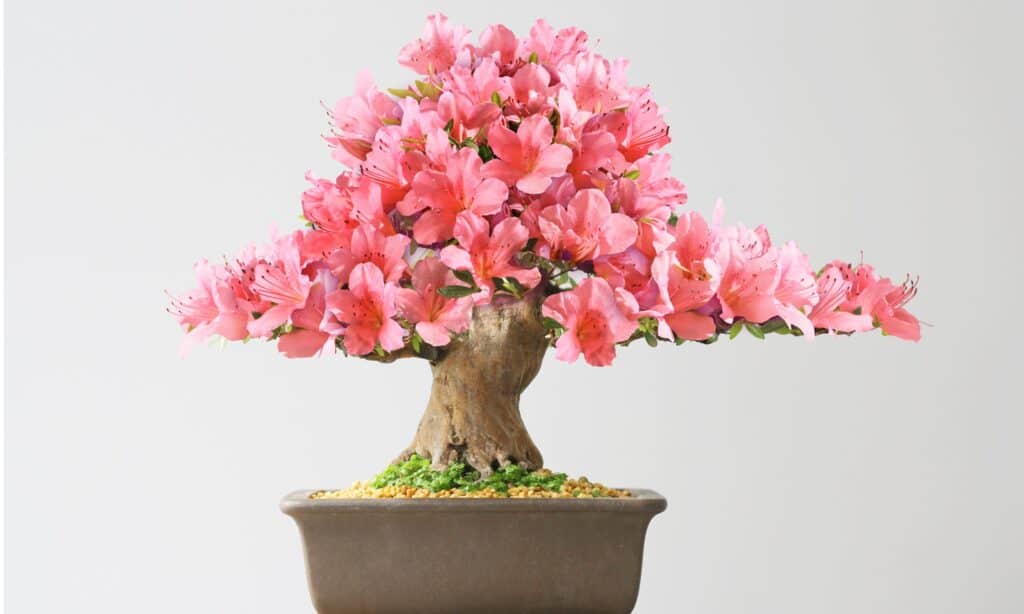
©iStock.com/StanOd
If you are looking for a Bonsai tree that produces flowers, you should consider an Azalea plant if you are a beginner. With hundreds of different species in the same genus, Azalea Bonsai trees offer you many different options that are easy to shape and care for. Most Azalea Bonsai trees need to be kept outdoors, and pay close attention to your pruning and fertilizing schedule if you want the maximum amount of blooms on your tree!
Boxwood Bonsai
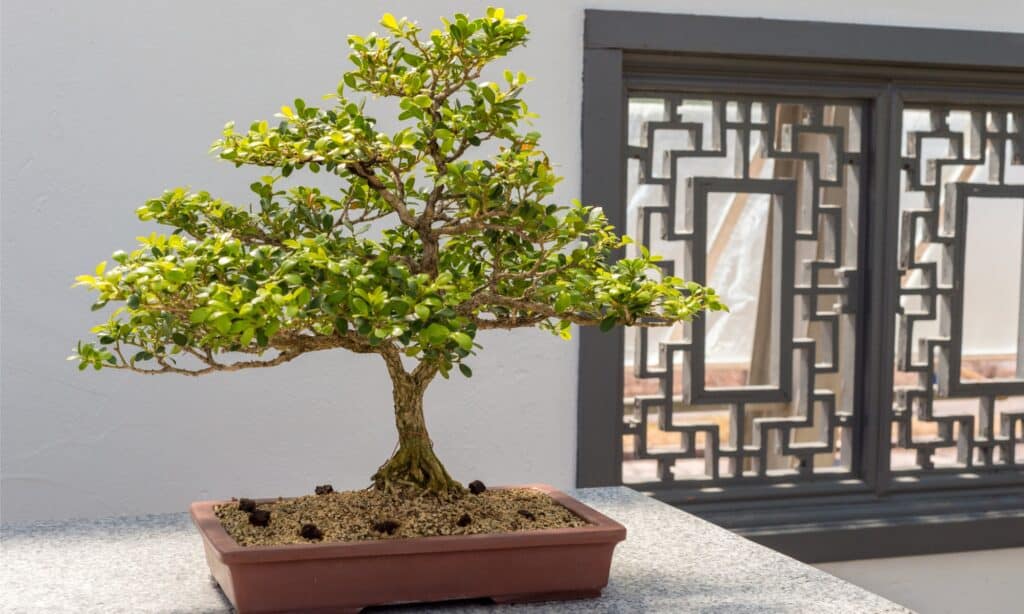
©iStock.com/MarcBruxelle
Choosing a plant that is naturally used to being shaped is always a good idea when starting a Bonsai tree, which is why the Boxwood is a great choice. Boxwood shrubs grow outdoors, but you can grow your Boxwood Bonsai inside, especially during the winter time. These trees produce small, evergreen leaves, and the bark tends to twist naturally, making your job especially easy!
Up Next
- Discover The 20+ Different Types of Bonsai Trees
- Korean Maple vs. Japanese Maple: Two Stunning Trees for Autumn Color
- Discover the Oldest Bonsai Tree and Where to See it
The post The 10 Best Bonsai Trees for Beginners appeared first on AZ Animals.
from Animal News, Facts, Rankings, and More! - AZ Animals https://ift.tt/ODQjJha